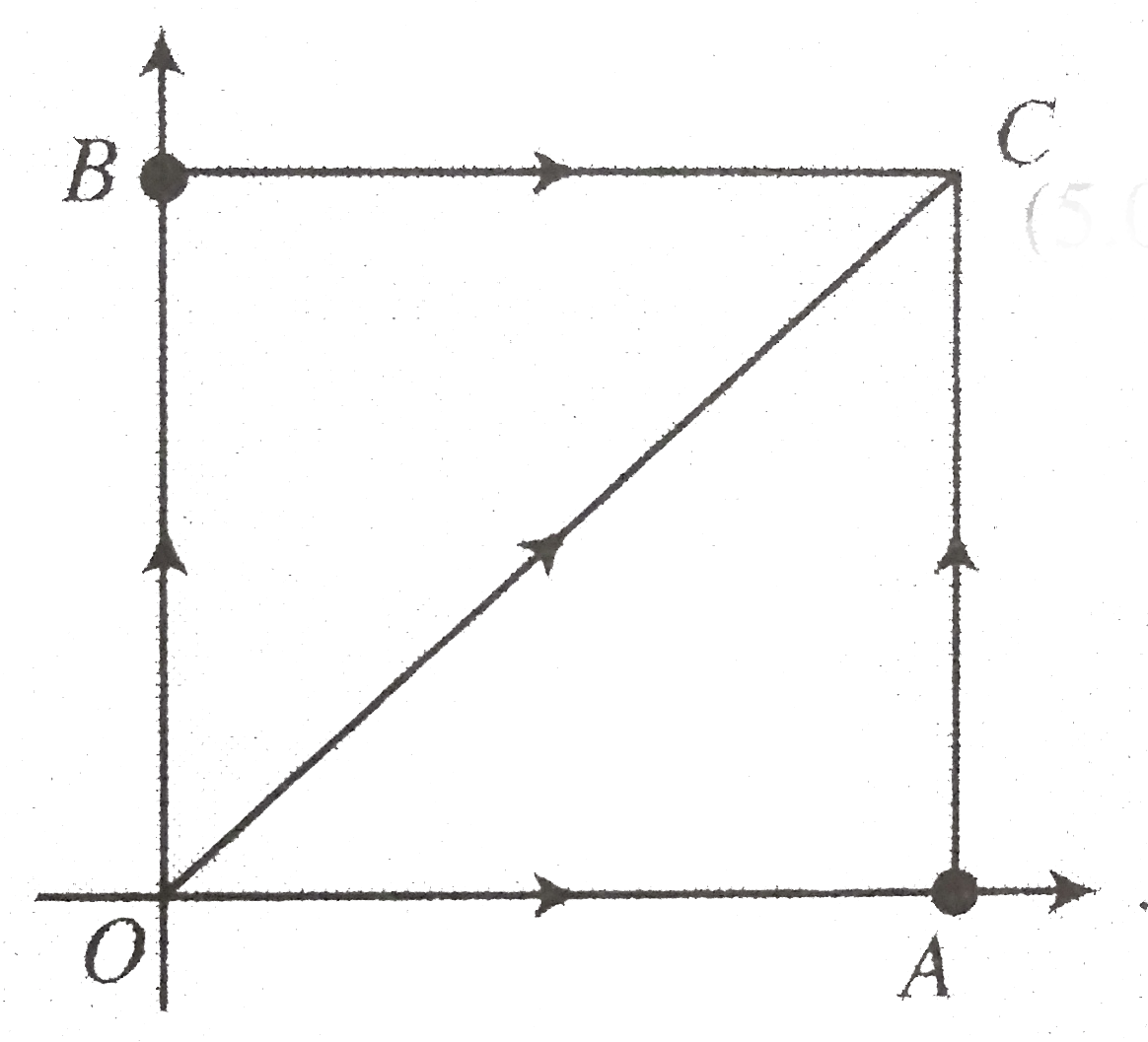A particle moves in x-y plane in figure under the influence of a friction force with magnitude 3.00N and acting in the direction opposite to the particle's displacement. Calculate the work done by the friction force on particle as it moves along the following closed paths: (a) path OA followed by AC and return path AO, (b) path OA followed by AC and the return path CO, (c) path OC followed by the return path CO, and (d) each of your three answers should be non-zero. What is the significant of this observation?

Video Solution
Text Solution
Along each step of motion, the frictional force is opposite in direction to the incremental displacement, so in the work cos180∘=−1
a. W=(3N)(5m)(−1)+(3N)(5m)(−1)=−30.0J
b. The distance CO is (52+52)1/2m=7.07m
W=(3N)(5m)(−1)+(3N)(5m)(−1)+(3N)(7.07m)(−1)
=−51.2J
c. W=(3N)(7.07m)(−1)+(3N)(7.07m)(−1)=−42.4J
d. The force of friction is a non-conservative force.
|
Updated on:21/07/2023
Topper's Solved these Questions
- BOOK - CENGAGE PHYSICSCHAPTER - WORK, POWER & ENERGYEXERCISE - Exercise 8.326videos
WORK, POWER & ENERGY
- BOOK - CENGAGE PHYSICSCHAPTER - WORK, POWER & ENERGYEXERCISE - Exercise 8.416videos
WORK, POWER & ENERGY
- BOOK - CENGAGE PHYSICSCHAPTER - WORK, POWER & ENERGYEXERCISE - Exercise 8.125videos
WORK, POWER & ENERGY
- BOOK - CENGAGE PHYSICSCHAPTER - VECTORSEXERCISE - Exercise Multiple Correct5videos
VECTORS
Similar Questions
Knowledge Check
- Question 1 - Select One
A particle is moving under the influence of a force which is fixed in magnitude and acting at an angle θ in the direction of motion. The path described by the particle is
Aa circleBan ellipseCa parabolaDa straight line - Question 2 - Select One
The path of a particle moving under the influence of a force fixed in magnitude and direction is [
AStraight lineBCircleCParabolaDEllipse - Question 3 - Select One
A particle moving along a circular path due to a centripetal force having constant magnitude is an example of motion with :
Aconstant speed and velocityBvariable speed and velocityCvariable speed and constant velocityDconstant speed and variable velocity.
For the path of a charged particle math the following.
 View Solution
View SolutionWhat determines the nature of the path followed by the particle
View SolutionA particle travels from A to B path shown in figure, then the displacement of particle is :
 .View Solution
.View SolutionWhen a body moves in a circular path, no work is done by the force since,
View SolutionThe distance-time graph of a particle moving along a curved path is a straight line .
View Solution
